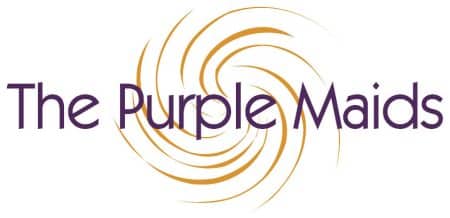Indoor air quality is a critical aspect of overall health, particularly in urban environments like Seattle, WA, where environmental factors can impact the air we breathe. As the spring season arrives, it’s an opportune time to delve into comprehensive cleaning practices to improve indoor air quality. In this guide, we’ll explore the significance of spring cleaning, effective techniques for reducing allergens and pollutants, and the expertise offered by The Purple Maids in Seattle.
Understanding Indoor Air Quality in Seattle
Seattle’s unique environmental factors, including high humidity levels, rainfall, and proximity to industrial areas, can contribute to poor indoor air quality. Common pollutants found in Seattle homes include dust mites, pet dander, mold spores, and volatile organic compounds (VOCs) from household products. Understanding these factors is crucial for implementing effective cleaning strategies.
The Importance of Spring Cleaning
Spring cleaning goes beyond mere tidying; it’s a comprehensive effort to rid the home of accumulated dust, allergens, and pollutants. A thorough spring cleaning regimen can significantly improve indoor air quality by removing sources of contamination and enhancing ventilation. Additionally, a clean home fosters a sense of well-being and promotes respiratory health for occupants.
Cleaning Techniques for Better Air Quality
Dusting and Vacuuming Tips
Regular dusting and vacuuming are essential for minimizing airborne particles. Use microfiber cloths to trap dust effectively and vacuum with a HEPA filter to capture even the smallest particles. Pay special attention to often overlooked areas such as ceiling fans, baseboards, and upholstered furniture.
Proper Ventilation Strategies
Good ventilation is key to circulating fresh air throughout the home and diluting indoor pollutants. Open windows whenever possible to allow for cross-ventilation, especially during mild spring days. Consider installing exhaust fans in kitchens and bathrooms to remove moisture and prevent mold growth.
Using Natural Cleaning Products
Many conventional cleaning products contain harsh chemicals that can compromise indoor air quality. Opt for eco-friendly alternatives such as vinegar, baking soda, and lemon juice, which are effective for cleaning while being gentle on both surfaces and air quality.
Air-Purifying Methods
Types of Air Purifiers
Air purifiers are valuable tools for removing airborne contaminants and improving indoor air quality. Choose a purifier with a HEPA filter to capture particles as small as 0.3 microns, including pollen, dust, and pet dander. Consider additional features like activated carbon filters for odor removal and UV-C light for germicidal action.
Maintenance and Usage Tips
To maintain optimal performance, regularly clean and replace filters according to manufacturer recommendations. Position the air purifier in areas where airflow is unrestricted, such as the center of a room. Run the purifier continuously for maximum effectiveness, especially during peak allergy seasons.
The Purple Maids’ Expert Advice
As seasoned professionals in the cleaning industry, The Purple Maids offer specialized services tailored to improving indoor air quality. With their expertise, homeowners can benefit from personalized recommendations and customized cleaning plans designed to address specific concerns. Whether it’s deep cleaning carpets, sanitizing surfaces, or implementing air purification solutions, The Purple Maids prioritize the health and well-being of their clients.
Maximizing Indoor Air Quality During Spring Cleaning: Tips from The Purple Maids in Seattle, WA
Spring cleaning presents an excellent opportunity to prioritize indoor air quality and create a healthier home environment. By following these tips and enlisting the expertise of The Purple Maids, residents of Seattle can breathe easier knowing their homes are clean, fresh, and free of airborne contaminants.
Conclusion
Maintaining optimal indoor air quality is essential for promoting overall health and well-being, particularly in urban areas like Seattle with specific environmental challenges. Through regular spring cleaning practices and the implementation of air-purifying methods, homeowners can create a safer and more comfortable living space for themselves and their families.
FAQs (Frequently Asked Questions)
- How often should I change my HVAC filters? Regularly changing HVAC filters is crucial for maintaining good indoor air quality. It’s recommended to replace filters every 30-90 days, depending on factors such as filter type, household occupancy, and presence of pets.
- What are some signs of poor indoor air quality? Signs of poor indoor air quality may include persistent allergies, respiratory issues, musty odors, visible mold growth, and excessive dust accumulation on surfaces.
- Can houseplants improve indoor air quality? Yes, certain houseplants can help improve indoor air quality by absorbing pollutants and releasing oxygen. Plants such as spider plants, peace lilies, and snake plants are known for their air-purifying properties.
- How can I reduce allergens in my home? To reduce allergens in the home, implement regular cleaning routines, use allergen-proof mattress and pillow covers, wash bedding in hot water weekly, and keep pets groomed and out of bedrooms.
